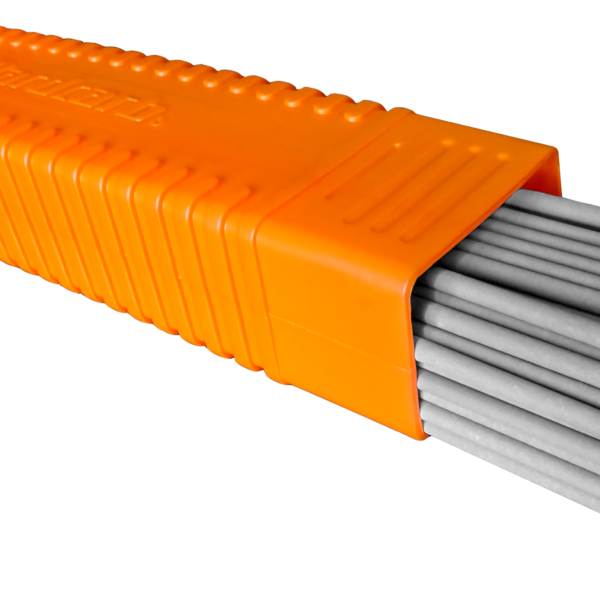- Home
- Main Catalog
- Buffer layers - Build up - Cladding - Joining
- Dissimilar & stainless steels
- Nicrolloy Inco82
Nicrolloy Inco82

Specially formulated high Nickel alloy electrode that produces deposits with excellent toughness, capable of withstanding high stresses even under impact loading. It is ideally suited for joining “difficult-to-weld” and dissimilar steels (iron and nickel base alloys) which need high integrity, safety, and welder-friendly usability. The material is highly suitable for wear protective cladding of low alloyed and alloyed steels. Precisely controlled high alloy content gives the deposit good resistance to heat, oxidation and corrosion.
Weld deposit characteristics:
In the as-welded condition this nickel base weld metal consists of austenite with a few carbides. The weld metal deposited by these consumables has no directly equivalent parent material, although its composition is related to Inconel 600. Mo and Nb are added to give high resistance to hot cracking, tolerance to dilution by many combinations of nickel base and ferrous alloys, and stable properties over a wide range of service temperatures. The deposits are able to
withstand stresses produced by thermal cycling or by strains caused by weld shrinkage in massive sections.
Recommended uses and applications
» for joining difficult-to-weld base materials such as: high-carbon steel, tool steel, spring steel, manganese steel, case-hardening steel, high-speed steels etc.
» for joining dissimilar steels: Ni-base alloys to austenitic steels, Ni-base alloys to ferritic steels, austenitic to ferritic steels up to 550 °C .
» for protective coatings and for joining: flame hardening equipment, pipe flanges, barrels, gate valves, tongs, heat treating racks and related equipment.
Additional info
Anti-wear suitability
| Metal-to-Metal friction Metal surfaces in relative motion forced into contact with or without lubricant. Degradation by the formation of micro-welds between the contacting surfaces. | - |
| High pressure abrasion Wear by relative movement under pressure of mineral particles of suitable hardness, shape and texture to remove material from the metal surface, leaving superficial deformation. | - |
| Cavitation Tearing out of grains from the metal surface by the formation and implosion of bubbles in a liquid in rapid motion. | - |
| Mechanical fatigue Fatigue and formation of cracks in surface regions due to tribological stress cycles that result in the separation of material. | - |
| Thermal fatigue Cyclic exposure to high temperatures leading to permanent deformation by alternate expansion and contraction. Alteration of the structure and properties of the material. | - |
| Hot oxidation Creation of a poorly adhering oxide layer that reforms constantly. Degradation by loss of material thickness. | - |
Workability
| Work hardening Work hardening is the process of making a metal harder and stronger through plastic deformation. When a metal is plastically deformed, dislocations move and additional dislocations are generated. | |
| Edge retention Suitability for creating sharp edges and retaining them during operation. | |
| Machining Machinability is the ease with which a metal can be cut (machined) permitting the removal of the material with a satisfactory finish at low cost. | Highly suitable. |
Mechanical properties
| Yield strength | > 380 Mpa |
| Tensile strength | 620 - 720 Mpa |
| Elongation A5 | 42% |
| Impact strength | > 80 J (-196°C) |